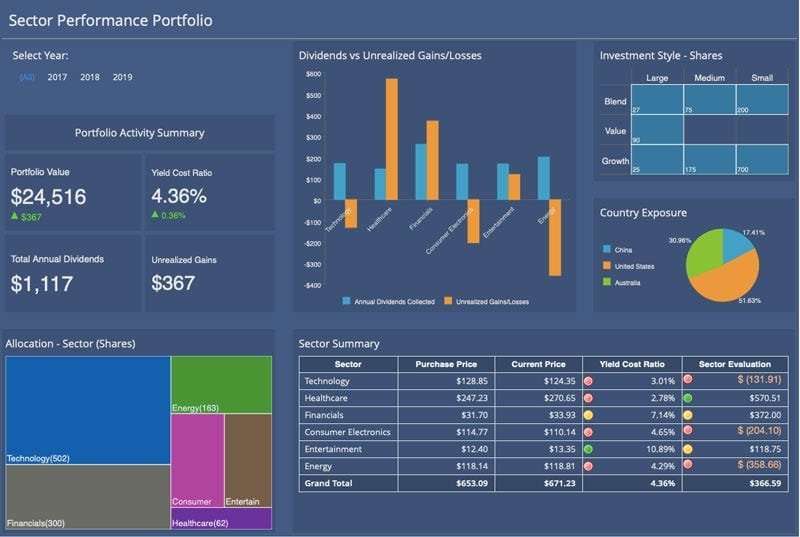Now Reading: 📈 How to Invest in Stocks for Beginners: A Complete Step-by-Step Guide
- 01
📈 How to Invest in Stocks for Beginners: A Complete Step-by-Step Guide
📈 How to Invest in Stocks for Beginners: A Complete Step-by-Step Guide

🌟 Introduction
Investing in stocks is one of the most powerful ways to grow wealth over time. While it might seem complicated, understanding the basics makes it much easier. This guide will walk you through every step, from choosing the right stocks to managing your investments wisely.
Whether you’re looking to build long-term wealth, save for retirement, or generate passive income, investing in stocks can help you achieve your financial goals.

1. Understand How Stocks Work
Stocks represent ownership in a company. When you buy shares, you own a piece of that company.
📊 Key Points to Know:
- Shares: A single unit of ownership in a company.
- Stock Price: The cost of one share, which changes based on market conditions.
- Dividends: Regular payments some companies make to shareholders.
- Capital Gains: Profit earned when you sell a stock for more than you paid.
💡 Tip: Start by investing in companies you know and trust.
2. Set Your Investment Goals
Before investing, define what you want to achieve.
🎯 Common Goals:
- 💰 Wealth Building: Invest for long-term growth.
- 🏡 Saving for a House: Grow your down payment over time.
- 🎓 Education Fund: Save for your child’s future.
- 🌴 Retirement: Build a portfolio that generates income after you stop working.
💡 Tip: Your goals will determine your investment timeline and risk tolerance.
3. Choose the Right Investment Account
To invest in stocks, you’ll need a brokerage account.
🏦 Types of Accounts:
- Taxable Brokerage Account: Best for general investing.
- Retirement Accounts (401k, IRA): Tax advantages for long-term savings.
- Robo-Advisors: Automated platforms that invest for you.
💡 Tip: Choose a low-fee brokerage like Fidelity, Vanguard, or Charles Schwab.
4. Determine How Much to Invest
Start with an amount you’re comfortable with.
💸 How to Decide:
- Emergency Fund First: Ensure you have 3-6 months’ worth of expenses saved.
- Start Small: Even $50 to $100 per month can grow significantly over time.
- Dollar-Cost Averaging: Invest the same amount monthly to reduce risk.
💡 Tip: Never invest money you might need in the next 3-5 years.
5. Pick the Right Stocks
Choosing stocks doesn’t have to be complicated.
🔑 What to Look For:
- Strong Financials: Look at revenue, profit, and debt levels.
- Stable Growth: Companies with consistent earnings growth.
- Dividends: Companies that share profits with shareholders.
- Industry Leaders: Well-known brands with strong market positions.
💡 Tip: Consider investing in index funds like the S&P 500 for instant diversification.

6. Diversify Your Portfolio
Don’t put all your eggs in one basket.
📈 How to Diversify:
- Stocks: Across different industries (tech, healthcare, finance).
- Bonds: Lower risk, steady income.
- ETFs & Index Funds: Instant diversification with one investment.
- Real Estate: REITs (Real Estate Investment Trusts) provide exposure to property markets.
💡 Tip: Aim for 10-20 stocks across various sectors.
7. Monitor Your Investments
Stay informed but avoid daily stress.
🔍 Best Practices:
- Check Monthly: Review your portfolio once a month.
- Stay Updated: Follow company news and quarterly earnings reports.
- Rebalance Annually: Adjust your portfolio based on performance.
💡 Tip: Don’t panic during market dips; focus on long-term growth.
8. Avoid Common Investing Mistakes
Beginners often make avoidable errors.
❌ What to Avoid:
- Emotional Investing: Stick to your strategy, even when the market fluctuates.
- Overtrading: Buying and selling too often increases fees.
- Ignoring Fees: Choose low-cost funds to maximize returns.
- Timing the Market: Focus on time in the market, not timing it.
💡 Tip: Follow the “Buy and Hold” strategy for long-term success.
9. Plan for Taxes
Understand how taxes affect your investments.
📝 Key Points:
- Capital Gains Tax: Short-term (less than 1 year) taxed higher than long-term.
- Dividend Tax: Qualified dividends are taxed at lower rates.
- Tax-Loss Harvesting: Offset gains by selling underperforming stocks.
💡 Tip: Invest through a Roth IRA for tax-free growth.

🌟 Conclusion
Investing in stocks is one of the best ways to build wealth over time. By setting clear goals, choosing the right investments, and staying consistent, you can achieve financial freedom.
Start small, diversify wisely, and focus on long-term growth. The sooner you start, the more time your money has to grow.




























